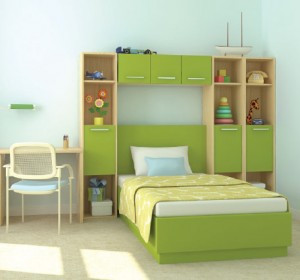By Catherine Purple Cherry, AIA, LEED AP, and Lauren Underwood, PhD
Along with behavioral and educational strategies used to teach and assist children with autism, there are ways to influence their success through alteration and treatment of their physical environments. It is important to create a home environment that accommodates the different needs of the autistic child and takes into account the rest of the family’s needs in relationship to that child.
Part 1: Sensory Response Functions
To begin to understand what areas of the home environment can change to support children with autism spectrum disorders (ASDs), it is helpful to first understand some of the physiological issues that can necessitate attention to structural and design features of the child’s home and other environments. Primary among these are ASD children’s sensory response functions, including auditory processing, visual perception and spatial skills, social and nonsocial physical stimuli, and sensorimotor responses (as described in more detail below). All of these aberrant sensory reactions are thought to be related to poor sensory integration and/or abnormal modulation of the central nervous system (CNS). They often differ qualitatively and in expression from child to child.
Auditory Processing
Children with autism demonstrate auditory abnormalities and/or impairments related to auditory perception of linguistic and social auditory stimuli when compare with neurotypical controls (Kellerman et al., 2005). A study that used magnetoencephalographic measurements of mismatch field (MMF) identified a dysfunction of cortical auditory discrimination in a subset of severely autistic children; the investigators postulated that this dysfunction plays a role in the children’s abnormal processing of auditory sensory information (Gervais et al., 2004; Tecchio et al., 2003) When the same brain function (cortical auditory processing) was studied in adults, using complex speech-like sounds, dysfunction of the left temporal word processing regions was found in autistic compared with neurotypical adults (Boddaert et al., 2004). Neurotypical studies have provided further evidence that individuals with autism display an atypical auditory information-processing profile(Jarvinen-Pasley & Heaton, 2007).
When developing home design strategies for a child who is hypersensitive to sound, it is important to consider such issues as acoustics, echoing, and noise pollution. This includes, for example, paying attention to flooring options (such as tile, wood, or carpet), wall coverings (heavy wallpaper, soundproof paints, and/or heavy drapes), and locations and types of mechanical equipment. All of these should be explored to help reduce reactions and associated stress resulting from auditory sensitivities (also see the discussion of sound in Part 2: Sensory Stimuli).
Visual Perception and Spatial Skills
Children with autism perceive and process visual information differently from neurotypical children; this can result in abnormal perceptual integration (Behrmann et al., 2006; Grice et al., 2001; Hubl et al., 2003), which in turn can have an effect on cognitive skills such as those associated with face recognition (Bertone et al., 2003; Mottron et al., 2006). Cortical activation patterns observed among ASD children confirm that during face processing there are deficits in the face-specific regions and higher activations in regions of the brain involved in visual search.
If a child has visual perception issues, design strategies should take into account perceptual integration of light, lighting, and reflective surfaces. Lighting should be sufficient to ensure that visual processing is not adversely affected. Studies have shown that bright light affects mood and behavior (Bauer et al., 1994), and light therapy has been used to treat and reduce symptoms of pediatric seasonal affective disorder (Swedo et al., 1997). In general, homes should enhance natural lighting through the use of expanded window area or light shelves (horizontal architectural reflective shelves that are mounted high on the interior of exterior walls to allow sunlight to bounce off the wall’s surface and penetrate deeply into a space, thereby illuminating the room with natural daylight). Brighter wattage light bulbs can be used, but fluorescent bulbs in general and especially those with lower frequencies should be avoided (see further discussion of lighting in Part 2: Sensory Stimuli).
Social and Nonsocial Physical Stimuli
The ability to appropriately regulate and manage responses to sensory input and adapt as the input changes is referred to as sensory modulation (Mulligan, 2002). Children with autism often demonstrate sensory-perceptual abnormalities that can include hyper- and hyposensitivity, sensory distortions, and/or sensory overload (O’Neill & Jones, 1997). These abnormalities generally present as over-responsiveness and/or under-responsiveness to sensory input (Dunn, 1997). In some instances, the extreme behaviors exhibited by children with autism have been found to be associated with abnormal modulation responses to sensory input (Ben-Sasson et al., 2007).
To address sensory modulation issues as they relate to physical stimuli in the home, several design strategies can be incorporated to help a child self-regulate. One basic strategy to reduce physical stimuli is to diminish clutter by increasing closet or cabinet storage (see discussion of clutter in The Purposeful Home for an Autistic Individual: Distractibility). As a second example, tactile paths from room to room can be created, forming a pattern of familiarity as the child moves from one area of the house to another. This can help redirect abnormal responses to physical stimuli in the home and encourage the child to learn appropriate ways to behave as part of daily living with other members of the family.
Sensorimotor Responses
Sensorimotor impairments are a feature of many developmental disorders. Children with autism are likely to display a variety of sensorimotor deficits and abnormalities, including stereotypies (repetitive behaviors such as rocking, twirling, or humming); low muscle tone or increased joint laxity; clumsiness; and apraxia (Bauman, 1992). It is not clear whether these sensorimotor issues are a consequence of altered sensory input, as is the case with proprioceptive dysfunction (where the nerve cells for muscles, joints, and/or tendons do not receive or interpret input properly), or are a result of intrinsic sensorimotor systems disturbances. Children with autism have also been documented to exhibit exaggerated and/or inhibited motor responses to sensory stimuli (Ornitz, 1974).
Rooms in the home – and the child’s bedroom, in particular – can be designed specifically to protect the child from self-harm while stimulating and challenging all of the sensorimotor response senses. The twofold goal is to give the child enough of a sensory challenge to motivate them and to positively stimulate changes in the way the child’s body responds to and processes sensory information, while balancing the amount of stimulation so as not to cause the child to go into sensory overload or to shut down.
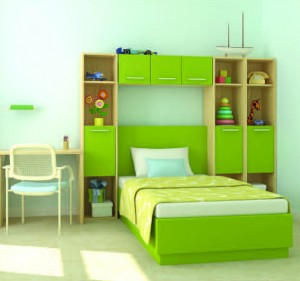 The Role of Toxicity
The Role of Toxicity
Scientific research does not discount the possible link between autism and toxic exposures (Desoto & Hitlan, 2010). Thus, although the etiology of the abnormal sensory responses just described remains unclear, toxicity likely plays some role. Contamination of the environment by manmade and natural toxins is known to have a direct impact on children’s health (Grigg, 2004), and there are a diverse number and type of toxic chemicals in the environment capable of causing neurodevelopmental disabilities (Weiss & Landrigan, 2000). The CNS is highly susceptible to environmental toxins. The cytotoxic effects of toxins on the nervous system can, in turn, affect the auditory, visual, motor, and physical sensory systems. Pesticides have been implicated in the occurrence of Parkinson’s disease (Betarbet et al., 2000) and attention-deficit/hyperactivity disorder (Kuehn, 2010); environmentally-released mercury has been associated with an increase in autism rates in Texas (Palmer et al., 2006).
The sensory issues faced by many children with autism can be exacerbated by children’s inability to efficiently remove toxins from their bodies (Meyers et al., 2007) due to decreased methylation (James et al., 2004; James et al., 2008) and increased oxidative stress (Chauhan & Chauhan, 2006); McGinnis, 2004). As a result of their inability to detoxify, ASD children often build up harmful toxins that can alter different systems of the body.
In addition to providing a possible explanation for the sensory challenges that individuals with autism may face, this also underscores the need to ensure that their living, learning, and working environments are designed with environmentally-friendly, nontoxic building materials and likewise maintained with nontoxic materials and cleaning products. If metabolically challenged (whether inborn or acquired) individuals with autism live, learn, or work in environments contaminated with toxic building materials or cleaning products, aversive behaviors will increase, and health, function, and productivity will be adversely impacted.
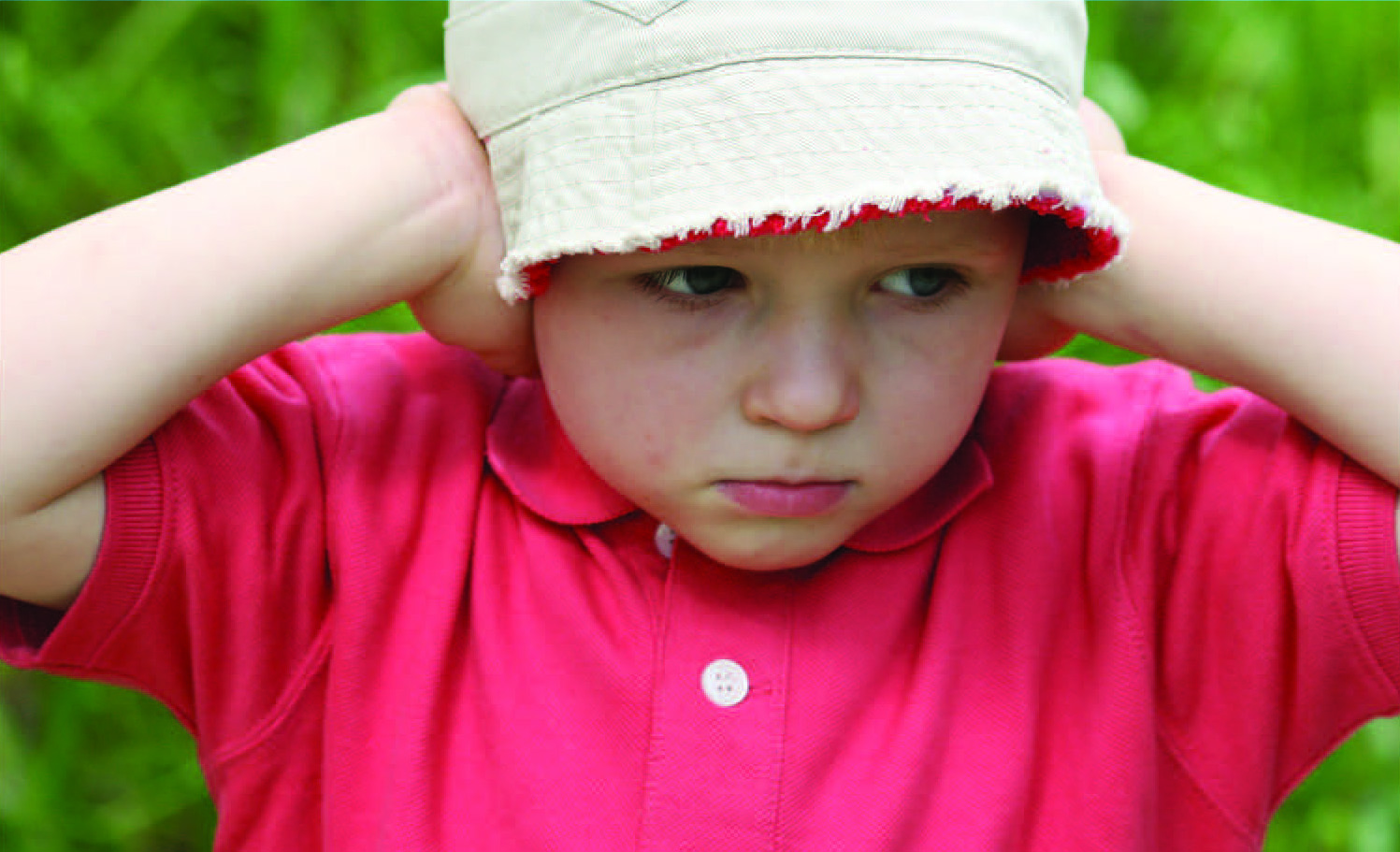 Part 2: Sensory Stimuli
Part 2: Sensory Stimuli
As already described, children with autism process sensory information differently from others. Numerous studies have documented unusual sensory responses in a significant proportion of children with autism (Baranek et al., 1997; Dahlgren & Gillberg, 1989; Kientz & Dunn, 1997; Le Couteur et al., 1989; Volkmar et al., 1986). Commonly observed responses include hyper- and hypo-responses to sensory stimuli; obsessions with an object’s sensory features; alternations in perception; and paradoxical responses to sensory stimuli. All these sensory issues should be taken into consideration when addressing aspects of the home environment such as lighting, sound, smells, temperature, and color. Because of the relationship between autism and toxicity, the safety of products and materials used in the home should also be taken into account. Toxins in the environment can potentially exacerbate many existing sensory issues.
Lighting
The ability to control the lighting in each space in the home is very important. Individuals with autism often have light and lighting sensitivities. When using artificial lighting, light levels should be controllable by dimmers in each room. In addition, lighting and lamps should be selected that eliminate or avoid both glare and flickering movement, both of which can be extremely distracting to children with autism. The flickering that can be observed in some fluorescent light bulbs is often visually intensified for the autistic child. The lower frequency (60-cycle) fluorescent bulbs seem to be most distractive; however, studies need to be conducted to provide conclusive evidence on this topic. If fluorescent bulbs must be used in the home, it is best to use the newer ones and eliminate all old bulbs that are at the lower frequency. As incandescent light bulbs are being phased out of the marketplace, consumers will need to explore the other alternatives, which currently include the newer compact fluorescent light bulbs (CFLs), LED (light-emitting diode) lighting, and halogen light bulbs. Although CFLs have the advantage of cycling at a higher frequency than older fluorescent bulbs, they have the disadvantage of containing mercury as a gas vapor within the glass tubing of the bulb. If a CFL bulb breaks, mercury vapor is released into the air, creating an increase in the potential toxicity level of the home environment. The commercial packaging for CFL bulbs has safe handling instructions in the event of breakage and directs consumers to the Environmental Protection Agency (EPA) website for further instructions on appropriate cleanup and disposal.
Whenever possible, natural lighting is the best lighting option. Providing natural light inside a home that matches outside lighting qualities seems to help ASD children with transitions, and light plays a powerful role in setting moods. Because natural light enhances colors, making them appear truer, harmonizing lighting and color can make a big difference in promoting favorable moods at home. Providing light shelves and other methods to deflect direct sunlight and create a filtered lighting level in the home is also important.
Sound
Many individuals with autism also have sound sensitivities. Although young children with autism often have their hearing tested (either due to the child’s lack of responsiveness and/or concerns about possible auditory damage associated with repeated ear infections), medical documentation frequently reveals that these children actually have extraordinary or exceptional hearing. Due to this increased sensitivity to sound, sensory bombardment and inappropriate noises can trigger inappropriate actions, cause frustration, impede learning, and affect the ability to focus. General sound levels (decibels of sound systems and acoustical reverberation within a space) as well as white noise (produced by sounds of different frequencies coming together) can affect learning when ASD children have auditory issues. Moreover, white noise from mechanical and electrical systems can interfere with a child’s ability to properly process sound.
To address these issues, all major sources of noise should be eliminated from the home. This may include isolating mechanical equipment such as air handlers, furnaces, and generators from adjacent living and sleeping areas. There are four potential ways to isolate equipment noise: (1) sound-isolate the room in which the equipment is located; (2) purchase high-quality equipment with less noise impact; (3) place the equipment on isolators that prevent the transfer of the vibration that creates noise; and (4) locate equipment outside, away from the house. It is possible to eliminate air noise coming from ductwork by sound lining the ductwork and integrating air baffles. Hard surfaces can be minimized or offset by soft wall curtains or seating to absorb reverberating sound. In addition, it is important to minimize the use of technologies that are associated with high-frequency sounds (for example, certain monitors and televisions), and avoid using loud yard equipment such as leaf blowers and lawn mowers near an autistic child’s bedroom window. (The relationship of the child’s room to outside landscaping can be taken into consideration when designing the house.)
Additional architectural applications that can assist in managing some levels of sound include taking the following actions:
1. Install sound absorption materials in wall or ceiling panels
2. Place nontoxic, chemical-free carpeting in selected areas. Note that many standard carpets outgas volatile organic compounds (VOCs) (see Smells below).
3. Place rubber balls on the bottom of furniture legs to prevent scratching sounds.
4. Hang baffles and banners in work and learning areas.
5. Use fabrics and cushions on furniture that are free and clear of dust, dust mites, and other allergens.
6. Install airflow silencers in the ductwork.
Smells
While strong odors can be annoying to neurotypical individuals, many autistic children are particularly sensitive from a variety of materials that they can be exposed to in their living environment. Because children are strongly affected by the quality of the air they breathe in any setting, elimination of odors and toxic exposures in an important goal for the ASD environment. Major indoor triggers include irritants such as paints, cleaning agents, pesticides, and perfumes (both personal from toiletries and from deodorizers) as well as building materials such as sealants, plastics, adhesives, and insulation materials. Additional triggers can include animal and insect allergens, environmental tobacco smoke, and molds. In recent years, efforts to design tighter and more energy-efficient buildings have resulted in an increase in indoor pollution levels and declining indoor air quality.
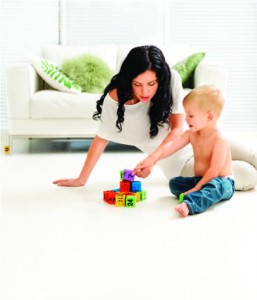 Among the primary culprits are the previously mentioned VOCs, which are substances containing carbon that evaporates (becomes a vapor) or outgasses at room temperature. The release of these trapped or absorbed gases is a process that can take at least 6-8 months. Many individuals recognize VOCs as the new car smell or new building smell. VOCs are commonly found in carpet, paint, composite wood products (casework), adhesives, floor wax, cleaning products and chemicals, and air freshener sprays. Immediate effects of VOC exposure for some individuals (whether ASD or neurotypical) can include eye, nose, and throat irritation; headaches; rash-like allergic skin reactions; breathing difficulties; nausea and/or vomiting; nosebleeds; fatigue; dizziness; loss of coordination; and confusion. The possible long-term effects of VOC exposure may include cancer and damage to the heart, liver, kidneys, and CNS (Wallace, 1991).
Among the primary culprits are the previously mentioned VOCs, which are substances containing carbon that evaporates (becomes a vapor) or outgasses at room temperature. The release of these trapped or absorbed gases is a process that can take at least 6-8 months. Many individuals recognize VOCs as the new car smell or new building smell. VOCs are commonly found in carpet, paint, composite wood products (casework), adhesives, floor wax, cleaning products and chemicals, and air freshener sprays. Immediate effects of VOC exposure for some individuals (whether ASD or neurotypical) can include eye, nose, and throat irritation; headaches; rash-like allergic skin reactions; breathing difficulties; nausea and/or vomiting; nosebleeds; fatigue; dizziness; loss of coordination; and confusion. The possible long-term effects of VOC exposure may include cancer and damage to the heart, liver, kidneys, and CNS (Wallace, 1991).
In addition to avoiding VOCs, it is important to use toxin-free household and personal care products. Other steps that can be taken to eliminate toxic odors and otherwise detoxify the home environment include testing and treating the home for radon gas; properly waterproofing foundations and providing a protective barrier such as a “slush slab” (2 inches of concrete topping over the gravel and soil) in crawl space areas to reduce the possibility of mold and mildew; regularly changing the filter on the home’s heating and air conditioning system to minimize exposure to dust and pollen; and possibly using an electronic air filter. When building a new home, the safety and health-promoting qualities of the home environment can be greatly strengthened by avoiding or encapsulating the many potentially harmful toxins that can be found in construction materials: VOC paints, arsenic-treated lumber, some metal alloys (copper), mercury batteries, polystyrene and polyurethane foams, urea-formaldehyde wood and insulation products, polyvinyl chloride (PVC) products, and others.
Temperature
Some individuals on the spectrum have extreme sensitivities to cold and heat because their sensory modulation to temperature is disrupted. Therefore, the heating and cooling system of a home should be designed so that the temperature in each room can be controlled separately. Desks and beds should be placed so that they are not close to glass windows, which emit the cooler temperatures during cold nights, or directly over air vents, which can blow air (whether hot or cold) directly onto the child. Additionally, temperature should always be considered when preparing bath water. Since some children may have extremely high heat tolerance, care should be taken to test the water temperature prior to having the child bathe.
The best way to control hot water temperatures is to adjust the hot water heater thermostat(s). In addition, all new tub and shower diverters are code-required to have temperature sensory valves.
Color
Science has shown that colors have an impact on mood, and color has a long history of therapeutic use (Winthrow, 2004). Generally speaking, bright colors are exciting, and soft colors are calming. However, the effect of particular colors on ASD children can vary, and trial and error with multiple colors may be necessary to determine the color that is right for any individual child. In addition, the effect of color can wear off after a person is in a space for a long period of time. Generally the rule of thumb regarding the impact and properties of color is as follows:
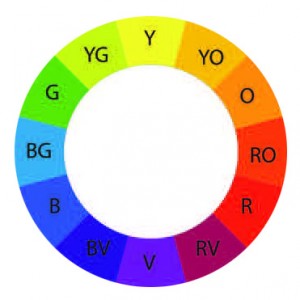
1. Red: Stimulates the mind, increases circulation and appetite
2. Blue: Calming, reduces blood pressure
3. Bright yellow: Reflects light, can overstimulate
4. Pale yellow: Calming
5. Green: Soothing, associated with nature and creativity
6. Orange: Can overstimulate and agitate
7. Light pink or rose: Soothing
Although research has shown that some ASD children see colors more intensely (White & White, 1987), this is not true for all. However, children with ASD may respond differently from their neurotypical peers to some colors and patterns. Intense colors, complex patterns, and bold contrast can create problems for those with sustained attention issues, but bright colors also can provide successful stimulation and help draw focus. In general, active areas of the home can be more brightly colored if this is not stressful for the child, while calming colors and more subtle hues should be selected for bedrooms and adjacent sitting rooms. If children have visual sensitivities, these must be considered when selecting paints and wallpapers. When changing the colors of any room, always try to change one color at a time so that the impact of any change can be understood.
The Purposeful Home for an Autistic Individual
With this extensive background on sensory response functions and sensory stimuli, we now review some of the behavioral challenges and challenges of daily living faced by children on the autism spectrum. Each of these issues can be helped by altering the environment that surrounds the ASD child. Obviously, those who are planning to build a new home have the opportunity to proactively determine the relationship and size of rooms as well as the finishes to be used. In existing homes, it may be possible to change the finishes, but the relationships of rooms may be less amenable to change. In this situation, it may become necessary to think outside of the box as to what goes into each existing room. For example, with an ASD child it might be helpful to use the typical formal dining room as the living room if the dining room is smaller in scale or in a better location of the home.
Let’s look at how to modify various areas of the home setting to address some key challenges.
Personal Space and Social Skills
Personal space can be defined both as the private bedroom or haven and as the zone around each of us that we require to be comfortable in conversation (the area of approximately 3 feet around our body). For children with ASD, one of the most significant challenges has to do with potential violations of this personal space. Whether the ASD child is entering his or her space, the risk of others or, conversely, others are entering his or her space, the risk of verbal or physical conflict and frustration exists. Personal space conflicts are also often related to sensory stimulation of any of the five senses, whether over- or understimulation. This can affect the child’s response to interpersonal space interactions.
In addition, the autistic child often does not have an inner voice or stream of consciousness-the silent voice in our mind that helps tell us what is appropriate. This may mean that there is a disturbance of the pragmatics of language usage (Frith, 1989), dysfunction in social cognition and executive function (Griffith et al., 1999); McEvoy et al., 1993), and/or disruption in theory-of-mind development (Leslie, 1987). The lack of these neurotypically inherent skills (a sense of personal space and an inner voice) makes it challenging for autistic children to develop proper social skills.
To help reinforce proper standing distances, a series of touching circles can be placed on the floor with center marks in each circle. These circles could be a permanent floor pattern contained within any room in a home. Continuous practicing with several individuals standing or sitting on the circle centers may help reinforce proper distances. To encourage appropriate seated distances in the living environment, seating should be in the form of single chairs. If necessary, the child may be assigned a special chair that belongs only to him or her. Additionally, halls and spaces between kitchen counters should be made wider to permit ample room for passage without violation of personal space. In tightly contained areas such as in cars, it may be necessary to buffer two children with a neurotypical adult seated between them, or separate the children by seating them on a different row and side.
Redirection and Change
ASD children often have great difficulty transitioning from one place to another or from one task to another. To support successful transitioning, it can be helpful to post clear schedules and signs; in addition, colored paths and doors or soft warning lights or sounds can be integrated into the home. In using light and/or sound, it is important to first consider whether the child has sound and/or light sensitivities. The designer must proceed cautiously to understand the best way to change the lighting (possibly from standard to dim or like a traffic light with different color warnings) or sound (including silence, a gentle instrument sound, or soft song). Integrating these types of signals into the lighting or announciation system of an environment can help provide the ASD child with a repetitive cue for changes and transitions. At home, parents can use the alarm system of their phone as long as the alarm is set on a soft, muted tone.
Choices and Repetitive, Compulsive, Perseverative, and Hoarding Behaviors
A major challenge concerns ASD children’s ability to make sound decisions, especially when it comes to safety. For example, many children on the spectrum are driven by their impulses rather than by good judgment. They often do not understand the inappropriateness of playing with harmful items such as matches, stove flames, scissors, tools, and so forth. Sensory issues can play a role in these inappropriate decision-making skills. For example, because children on the autism spectrum have intense inquisitiveness and are driven to take things apart to see what special things are inside or what they can use for other purposes.
ASD children often tend to be fascinated with specific objects. ASD children with obsessive-compulsive disorder (OCD) can become so fixated on specific parts or pieces that they may fail to realize the danger that the items pose. These fascinations can be different for each autistic child. Some are distracted by running water or fire, while others are fascinated by twirling a small string. In the home, hand sinks should be tucked behind partial walls to block lines of sight during learning activities or therapy sessions. Similarly, it is helpful to avoid equipment that uses gas and creates a flame (such as gas fireplaces or gas cooktops). Personal items should be concealed (especially items capable of causing harm such as matches, lighters, pins, or knives), and small items should not be left on counters.
A simple solution to help reduce distraction and hoarding is to provide ample storage in all settings; this can be accomplished by integrating locked closets or cabinets (out of sight, out of mind). Keep in mind that some children, when decompressing, need a collection of special things that they can perseverate on that provides comfort. It is therefore helpful to designate a specific drawer or provide dedicated colored bins in the child’s bedroom for these items. These items can be used to temporarily help a child decompress; however, remember that the child can just as easily obsess about their special things and become overly dependent on them for self-calming. It can take continuous effort to ensure that the items get placed back in their designated bins so that this does not occur.
 Distractibility
Distractibility
Many children with autism struggle with attention issues because they are either under or over stimulated by things in their environment. They may also demonstrate increased reactivity or allergy to things in their environment. This can translate as being hyper- or hypo-sensitive, allergic, intolerant, or hyper- or hypo-reactive, which in turn can affect their behavior and/or their responses to things in their physical environment. The environmental design solutions listed below can help reduce distractibility.
Clutter: Cluttered spaces are often a great source of distraction because they can be visually overstimulating even for a neurotypical child. Designing storage compartments into the physical environment to address the organizational needs of a space is the key to reducing clutter and is applicable to all rooms of a house. The best strategy to avoid clutter is to provide ample enclosed storage space rather than open shelves. Cabinets can be lockable if the aim is to rpevent the child from getting any item they desire at any time. Additionally, it is ideal to store all adaptive equipment out of sight when not in use.
Door and Window Placement: If building a new home, doors should be staggered. This eliminates a visual connection between rooms opposite one another and helps prevent noise transfer between rooms. This can be especially important if the child is prone to outbursts and/or has sleep issues. Consideration should also be given to the placement of windows within each room. For example, by placing windows higher in rooms where the child learns or has therapy sessions, the child will be unable to see and be distracted by movement outside. This can also facilitate the influx of natural light into the room. Overall, it is helpful to take sight lines into account when designing and placing rooms in relationship to one another, and manage sight lines to outside areas so as to eliminate views to high-activity areas or traffic. In an existing home, consider placing shutters on the lower portion of windows to obstruct views to active outside areas or placing furniture such that it obstructs views between rooms.
Communication
Many ASD children are either nonverbal or have challenges with written language. Because many children with autism are visual thinkers, visual cues can be helpful reminders and can work as daily prompts in the home. For example, simple patterns and colors can be used as “way finding” elements to clearly define circulation paths that guide children. Colors in flooring or on walls can be used as a means to communicate simple expectations such as “Do not touch,” “Do not enter,” “Stand here for waiting,” or “Stand here to brush your teeth.”
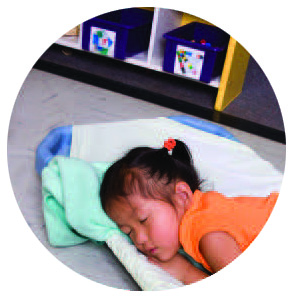 Fight or Flight
Fight or Flight
A defense mechanism often used by children with autism is the fight-or-flight (or sympathetic versus parasympathetic) response. The fight reaction can present itself in several ways. For example, it can be displayed as self-injury, physical harm to the environment, or physical harm to others. The flight response may display as fleeing or running away (for example, running into dangerous traffic). ASD children who become aggravated or frustrated can be incredibly difficult to manage. The result of this frustration may be displayed as anger towards inanimate objects or surroundings (such as drywall or furniture) or as self-injurious behaviors such a face punching or head slamming.
Self-harm can also result from children’s inability to express themselves verbally. Many ASD children suffer from real medical pain often associated with gastrointestinal distress; however, they frequently lack the communication skills necessary to express their pain or suffering. Often, in this situation, ASD children will inflict further harm upon themselves, for example biting themselves, hitting their heads with their hands, or banging their heads against the wall in an attempt to communicate that they are in pain. Of course, the most effective thing to do is to investigate, determine, and remediate the root cause of the child’s pain and frustration through appropriate medical and other investigation. A behavior plan is never going to be a substitute – physiologically or behaviorally – for relieving a child of harsh gut pain. In the meantime, however, we can make the environment safer by providing ways to lessen the chance that the child can get hurt.
Fight or flight reactions can be redirected or mitigated by implementing environmental applications such as using durable materials, providing secure boundaries, and having a defined time-out space.
Durability of Materials: The durability of selected materials is an important environmental consideration for the autistic population, particularly because health conditions that comorbidly present with autism sometimes include diagnoses such as intermittent explosive disorder and bipolar disorder. Moreover, autistic children who are transitioning through puberty may use their newly acquired physical strength in undesirable ways, such as punching a hole in a wall or breaking a window or mirror. Materials that can be selected for increased durability include color-thru floor linoleum tile and stained concrete floors; wall protection panels, linoleum wall panels, spray-on durable paints, and corner guards; and impact-resistant drywall, plywood sheathing under drywall, and concrete block. Today’s decorating and construction materials can be combined to create a warm, colorful, and inviting environment. In selected these materials, the toxicity of each element should be considered. In many cases, there are products that are either chemical-free or have reduced toxic levels. The green building movement has driven significant changes in the toxicity levels of today’s building products.
Secure Boundaries: Autistic children need to have clearly defined physical boundaries and clearly indicated restrictions, including both personal space and perimeter boundaries such as in a backyard. Because ASD children are not always aware of their own or others’ personal space, they may not always assimilate boundaries from one environment to the next. When a child is in fight or flight mode, it is important to define the perimeter of the backyard either through secure fencing or with landscaping. Although landscaping will not prevent fleeing children from leaving the area, it can help some children visualize their play area boundaries. If the autistic child is flight-prone, it is recommended that all doors have warning alarms so that parents and caretakers can be aware of any attempt to flee. An additional consideration with backyard perimeter walls and fencing is that there should be no trees that enable the child to climb so as to attempt to jump to the other side of the wall or fence. Indoors, for children who are prone to elope or who have epilepsy, it is important not to have furniture (such as a chest of drawers) or environmental elements onto which children can climb and from which they can fall, especially through windows or onto concrete. This is also important to remember when traveling and staying in hotels.
Time-Out Space: Children with autism may require a time-out space that allows them to decompress and regain self-control after an outburst. A time-out space should be durable and, ideally, sound isolated. The space should be somewhere that provides the individual with privacy to help retain their dignity. Privacy removes the child from any possible audience that would either reinforce or stigmatize their behavior and distances other members of the household from the disruption. The space should promote calmness through the use of pale colors, soft music, a comfortable, relaxing couch or overstuffed chair, and possibly soothing graphics on the ceiling. Time-out should not be used as a punishment, but rather as a way to help the individual (as well as the family) feel better, while also preserving the safety of the child and other family members.
Conclusion
It is important to look beyond behavioral modification strategies when considering ways to alter difficult behaviors or reinforce the good behaviors of an autistic child. A comprehensive approach to support ASD children will integrate behavioral, academic, and physical and environmental strategies to improve the quality of life for children on the spectrum. The most important message of all is to respect the individual with the autism diagnosis. When we respect the individual’s underlying physiology – investigating, remediating, and dignifying their sensory and other physiological issues – we are indeed respecting the individual.
